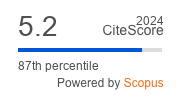Article | Open Access
Ocean Governance in the Coral Triangle: A Multi-Level Regulatory Governance Structure
| Views: | 2670 | | | Downloads: | 1970 |
Abstract: The current mode of ocean governance in the biogeographically defined space of the Coral Triangle emerged due to the framing of marine degradation as a de-bounded risk with a transboundary nature. This framing justified the rescaling of the issue’s governance from the national to the regional. This article will explore how ocean governance in the form of the Coral Triangle Initiative on Coral Reefs, Fisheries, and Food Security (CTI-CFF) is an example of a regional multi-level regulatory governance arrangement based on disaggregated, regulatory forms of statehood. These new kinds of regional regulatory governance are defined by the dominance of policy and technical expertise. As such, non-state actors work closely with national and supranational actors in the development, implementation, and regulatory functions of the CTI-CFF. The organizational structure of the CTI-CFF’s governance framework provides an example of how regional regulatory systems are networked into existing national government structures. The CTI-CFF’s Regional Plan of Action and corresponding mechanisms serve as a model for each member country’s National Plan of Action and domestic programs. These plans of action promote the transformation and rescaling of national governance to be consistent with regional standards of marine resource governance. To summarize, CTI-CFF is a multi-level governance structure constructed to strengthen regulatory regionalism.
Keywords: Coral Triangle Initiative on Coral Reefs, Fisheries, and Food Security; functional specialization; marine degradation; meta-governance; non-state actors; ocean governance; regulatory regionalism
Published:
© Sarah A. Heck. This is an open access article distributed under the terms of the Creative Commons Attribution 4.0 license (http://creativecommons.org/licenses/by/4.0), which permits any use, distribution, and reproduction of the work without further permission provided the original author(s) and source are credited.


